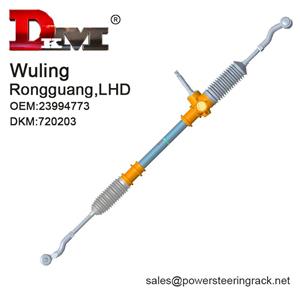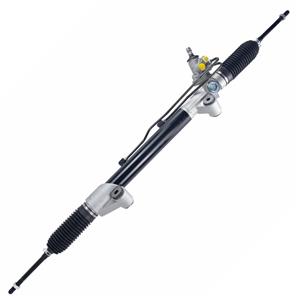How many hours does it take to replace a rack and pinion?
The rack and pinion in a car's steering system is a critical component that directly affects the vehicle's handling and driving safety. When this system fails, it usually needs to be replaced in a timely manner to ensure the normal operation of the vehicle. However, many car owners do not fully understand the time required to replace a rack and pinion and the steps involved.
This article will explore the time estimate and specific steps for replacing a rack and pinion in detail to help car owners better understand this process.

How many hours does it take to replace a rack and pinion?
Time estimate for replacing a rack and pinion:
The time required to replace a rack and pinion varies depending on the vehicle model, system design, working environment and technical proficiency. Generally speaking, it usually takes a professional technician 3 to 5 hours to complete this task under ideal conditions. However, this time is not fixed, and the following factors may affect the specific operation time:
Vehicle type and design complexity
The steering system design of different vehicles varies, especially in terms of engine compartment layout, suspension system, frame design, etc., which will affect the difficulty of removing and installing the rack and pinion. For example, the compact steering system of some models may require additional removal of other components to access the rack and pinion, which will increase the operation time.
Equipment and tool use
Rack and pinion replacement requires the use of specialized equipment and tools. A repair station with the right tools can effectively reduce the operation time, especially during the removal and installation process. Conversely, the lack of the right tools may cause delays in the operation or even require additional time to handle.
Vehicle condition and preparation
In some cases, the condition of the vehicle may affect the speed of replacing the rack and pinion. For example, if the vehicle's chassis components are rusted or the bolts are difficult to remove, the technician may need extra time to deal with these problems. In addition, the adequacy of the preparation work also affects the smoothness of the operation, such as pre-removal of parts that may interfere with the operation.
What steps are involved in replacing a rack and pinion?
Knowing the specific steps required to replace a rack and pinion can help car owners better understand the complexity of this process. It not only involves removing and installing new parts, but also includes a series of inspection and adjustment steps to ensure the proper operation of the system.
Vehicle lifting and safe preparation
Step 1: Raise the vehicle
The first step to replacing a rack and pinion is to raise the vehicle safely. Use a jack or lift to raise the vehicle to a suitable height so the technician can easily access the steering system. Make sure the vehicle is stable and fixed to prevent accidents during the operation.
Step 2: Disconnect the battery
To prevent the electrical system from interfering with the replacement process, technicians usually disconnect the vehicle's battery. This operation helps prevent short circuits or other electrical problems when removing the steering system.
Remove necessary parts
Step 3: Remove the steering column connection
Before replacing the rack and pinion, the technician first needs to remove the coupling that connects the steering column to the rack. This process usually requires removing several bolts to disconnect the physical connection between the steering column and the rack.
Step 4: Remove the suspension components
Some vehicles' suspension systems may affect the removal of the rack and pinion, so the technician needs to remove some suspension components, such as the lower control arm or stabilizer bar. This process requires careful operation to ensure that other components are not damaged.
Step 5: Disconnect the steering tie rod from the wheel
The steering tie rod connects the rack to the wheel, so the technician needs to disconnect the tie rod from the wheel before removing the rack and pinion. This is usually done by removing the ball joint at the end of the tie rod.
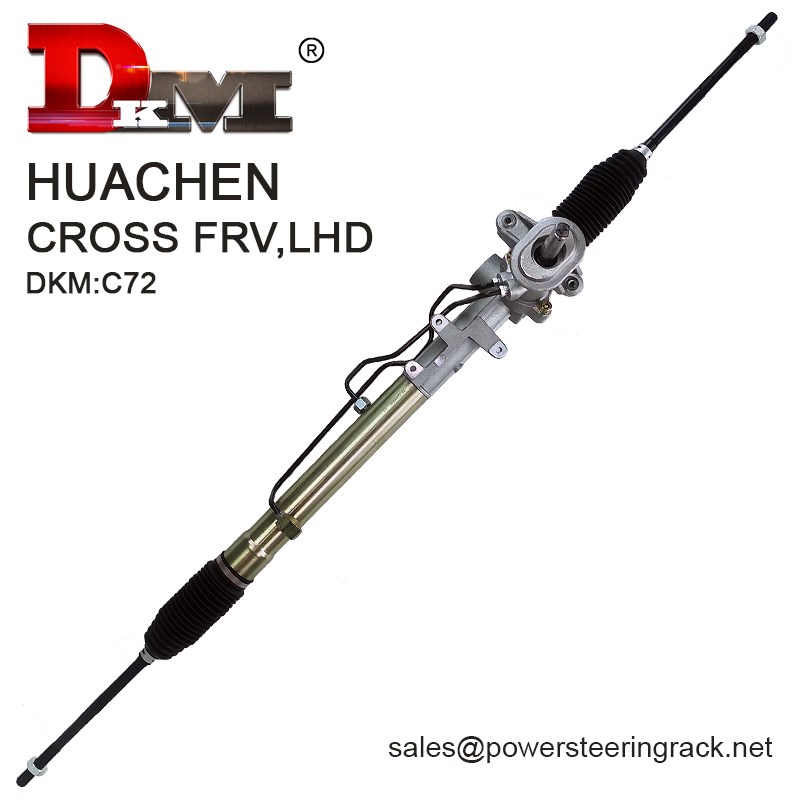
Remove the old rack and pinion
Step 6: Remove the hydraulic lines (for hydraulic power steering systems)
If the vehicle is equipped with a hydraulic power steering system, the technician will need to disconnect the hydraulic lines connected to the rack. These lines usually include high-pressure and low-pressure oil lines, and the technician needs to be careful to avoid leaking hydraulic fluid.
Step 7: Remove the rack retaining bolts
Next, the technician needs to remove the bolts that hold the rack and pinion in place. These bolts are usually located at each end of the rack and are fastened to the frame. After removing these bolts, the rack and pinion can be loosened from the frame.
Step 8: Remove the old rack and pinion
After removing all related parts, the technician can remove the old rack and pinion from the vehicle. This process may require some skill, especially in vehicles with tight space, and the technician needs to carefully remove the rack from the frame.
Install the new rack and pinion
Step 9: Install the new rack and pinion
Place the new rack and pinion into the frame and secure it in place using the previously removed fixing bolts. The technician needs to ensure that the rack and pinion are properly positioned and that all bolts are tightened to the specified torque.
Step 10: Reconnect the hydraulic lines (for hydraulic power steering systems)
For hydraulic power steering systems, the technician needs to reconnect the hydraulic lines. Make sure that all joints are securely connected and there is no risk of hydraulic fluid leaks.
Step 11: Reconnect the steering tie rod and suspension components
The technician needs to reconnect the steering tie rod and wheel and install the suspension components as required. Each connection point needs to be checked for tightness and to ensure that the suspension and steering systems are restored to correct working order.
Step 12: Reconnect the steering column
Reconnect the steering column to the new rack and ensure that the coupling is securely installed. The technician usually adjusts the position of the steering wheel at this stage to ensure that the steering system is working properly.
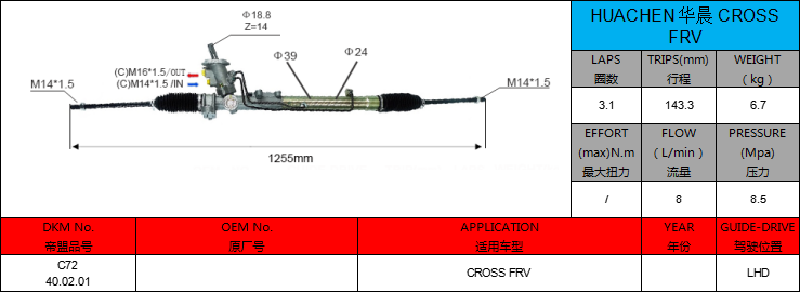
System Testing and Adjustment
Step 13: Check and bleed the hydraulic system (applicable to hydraulic power steering system)
If the vehicle is equipped with a hydraulic power steering system, the technician needs to check the hydraulic oil level and bleed the system. The purpose of bleeding is to remove air from the hydraulic lines to ensure that the hydraulic system works properly.
Step 14: Tire alignment check
After replacing the rack and pinion, the technician usually performs a tire alignment check. Replacing the rack and pinion may affect the vehicle's toe angle and other parameters, so alignment adjustments need to be made with professional equipment to ensure stable driving of the vehicle.
Step 15: Road test
Finally, the technician needs to perform a road test to verify the performance of the steering system. During the test, the technician will check the response of the steering wheel, the smoothness of the steering, and whether there is any noise or vibration in the system. After confirming that everything is normal, the repair work is considered complete.
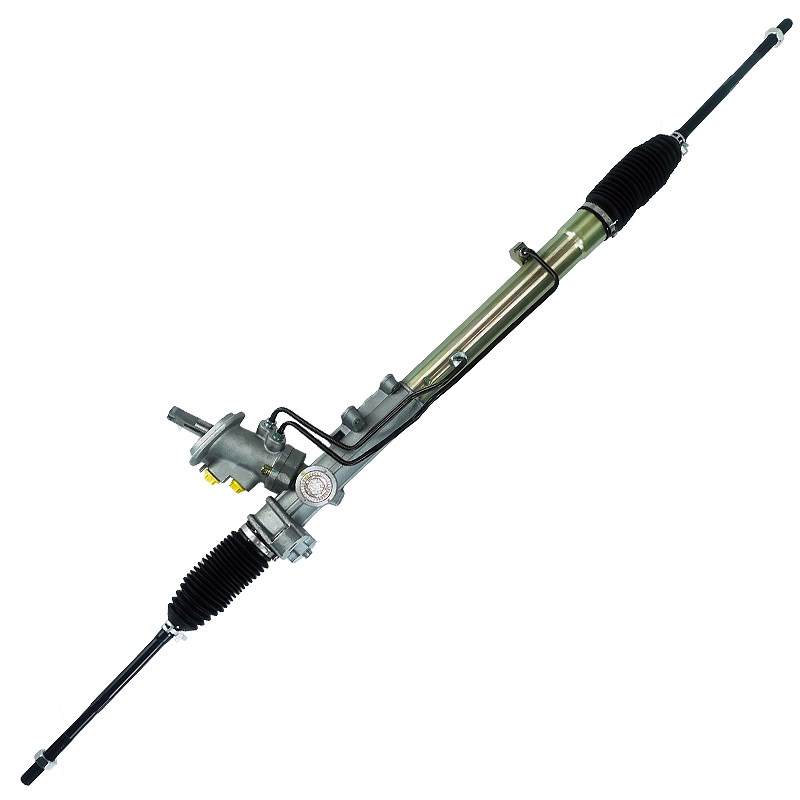
Summary
Replacing the rack and pinion is a complex and time-consuming process that usually takes 3 to 5 hours to complete. The complexity of the operation depends on the vehicle design, system type, and technician proficiency. The entire process involves multiple steps, including lifting the vehicle, disassembling components, removing old parts, installing new parts, and testing the system.
Although this operation requires a certain amount of time and money, it is essential to the vehicle's handling and safety. Regular inspection and maintenance of the rack and pinion system can extend its service life and avoid unnecessary repair costs. For car owners, mastering these basics will help make the right judgment and decision when steering problems occur.

